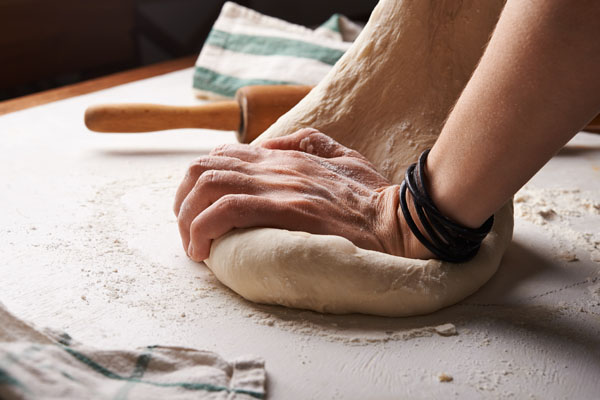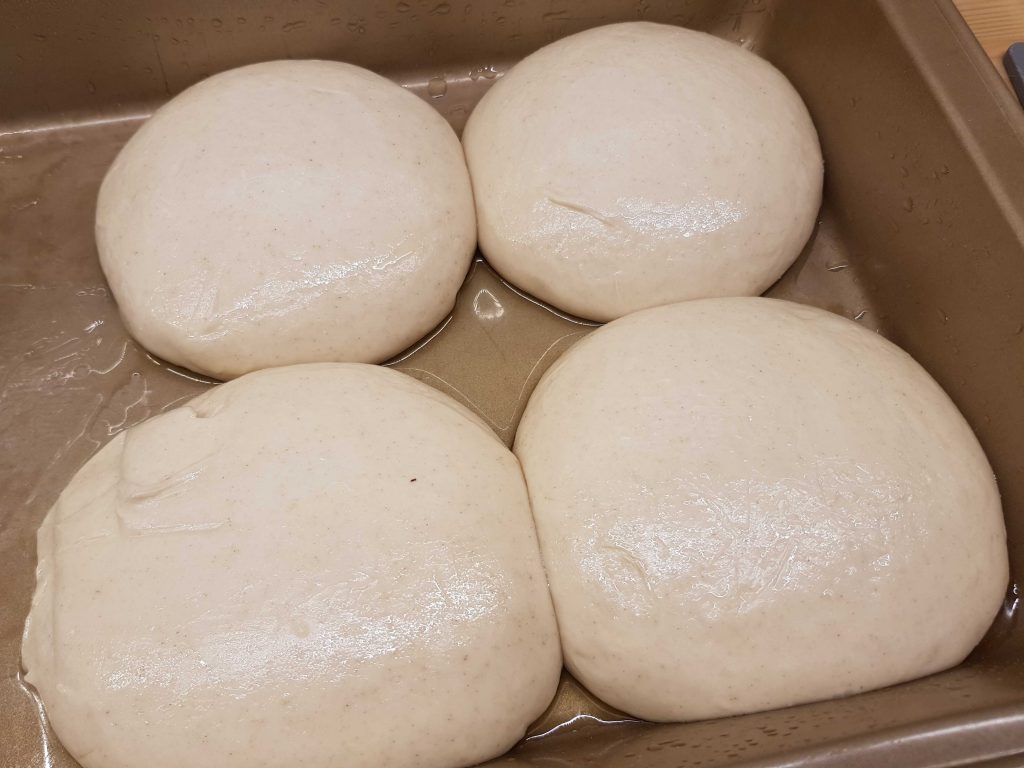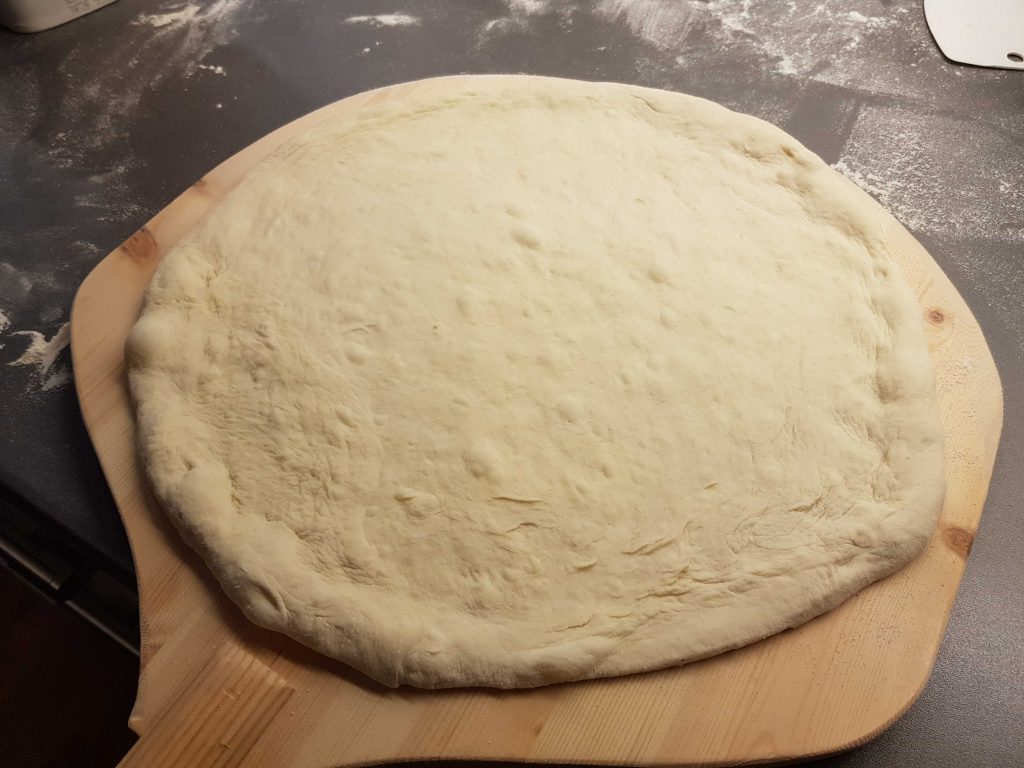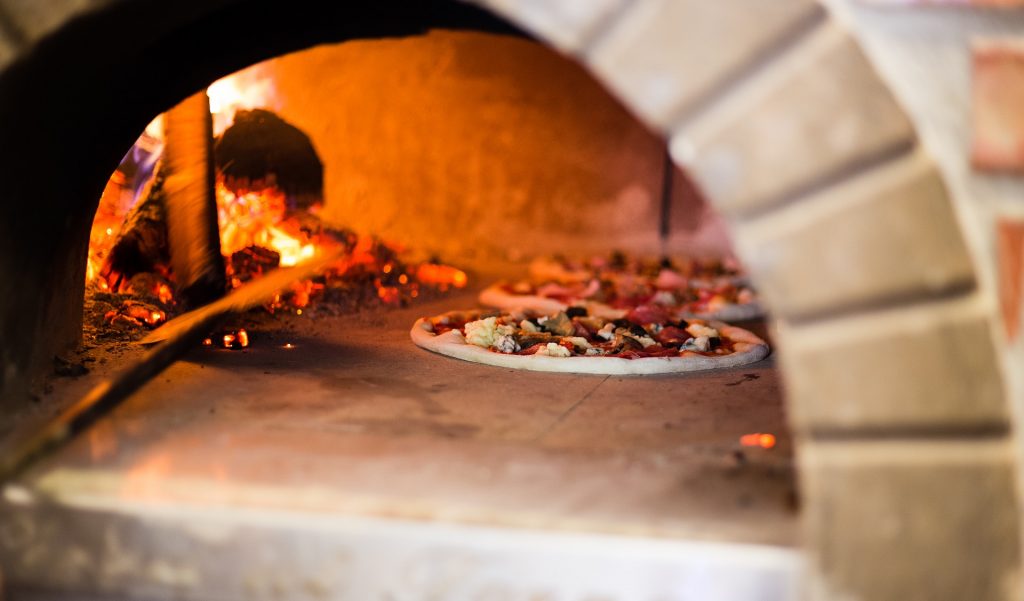Do you like pizza? Have you ever wondered what the best pizza in the world is? Then you have come to the right place. This is the ultimate guide to Neapolitan pizza!
There are as many variations of pizza as there are pizza chefs, but most would agree that the pizza as we know it today came from Italy. Within Italy there are huge variations in styles of pizza, from the thin, crispy pizza crusts of Rome to the thick-crusted, square pizza of Sicily. But one type of pizza stands out, the Neapolitan pizza.
The Neapolitan-style pizza is a circular, light and soft, thin-crust pizza with a raised edge. The size of the pizza range from 22 to 35 cm (8.5 to 14 in) in diameter, and is cooked in a wood-fired
Naples has a long tradition of pizza, and the Neapolitan pizza as we know it today was developed in Naples in the late 18th century, when the Neapolitans started adding tomatoes to their flatbreads. At the time pizza was considered ‘peasant food’, and was sold from carts in the poor parts of Naples.
The first type of pizza made in Naples was probably the Marinara, which is a simple pizza with crushed tomatoes, oregano, garlic and olive oil. But perhaps the most famous Neapolitan-style pizza is the Pizza Margherita, named after Queen of Italy, Margherita of Savoy. When she visited Naples in 1889, pizzaiolo Raffaele Esposito created pizza in the colors of the Italian flag: red tomato sauce, white mozzarella and green basil. Espasit’s restaurant, Pizzeria Brandi is still in business today.
The Four Ingredients of Neapolitan Pizza Dough
For the best result, the use of quality ingredients is essential. A Neapolitan pizza dough consist of only four basic ingredients: water, flour, yeast, and salt.
Water
The water should be clean, and at around 20°C (68°F). During kneading of the dough, the temperature will increase, therefore the water should not be too hot when you start out. If the weather is really hot, the temperature of the water can be a bit lower to reach the optimal temperature for fermentation. Though, you should not go lower than 10°C (50°F), since that can slow down the fermentation.
Flour
For Neapolitan pizza, you should use type 0, or type 00 wheat flour. These are Italian-milled, finely ground flours. They typically have a high protein/gluten content of around 10-12%, which is perfect for a thin, crispy pizza crust.
Gluten is a group of proteins that gives the dough it’s elasticity. The amount of gluten affects the consistency of the final product. When kneading the dough, gluten strands are getting longer and stronger, which will result in a stretchier and more elastic pizza dough.
Yeast
Traditionally natural fresh Neapolitan yeast or brewer’s yeast is being used for pizza dough. The amount of used is fairly low, because the dough is fermented slowly, over a longer period of time. When mixing the dough, salt and yeast should not have too much direct contact. The reason is that too high concentration of salt will damage the yeast cells, and ruin the fermentation process. Therefore salt should be mixed with water and flour before you add the yeast.
The dough should ferment between 8 and 24 hours, but at longer fermentation times, you should use less yeast. The amount of yeast is also not propositional with the other ingredients. For example: for one liter of water, you should use 0.3g of yeast, while for five liters of water, you should use 1g of yeast, not 1.5g, so even if the amount of dough is multiplied by five, you should only multiply the amount of yeast by around three.
Salt
Traditionally, Neapolitan pizza is made with around 3% fine sea salt. And the main purpose of salt in Neapolitan pizza dough is to extend the fermentation time and to improve texture and flavor.
Salt slows down the yeast. So by adding salt to the dough, the yeast gets less active, and you get a longer, slower rise. Salt also helps strengthening gluten, something that lets the dough keep its shape during the long fermentation. And the reason you want along, slow fermentation is to improve the flavor. But salt itself also works as a flavor enhancer, making the dough taste better.
Stronger gluten formation also makes the dough more elastic and less prone to tearing. And in addition to that, salt helps brown and crisp the crust during baking.
You can read everytihng about salt and how it affect pizza dough here.
Tools
Some basic tools that is needed to make pizza are: a rising box, one or more pizza peels and a wood-fired
Rising box
For fermentation of the pizza dough, a rising box is recommended. A rising box is simply a food-safe, air-tight container where you leave the pizza dough balls for fermentation.
Pizza Peel
I recommend having two types of pizza peels: one made out of wood and one made out of steel. The wooden peel is ideal for assembling the pizza and transfer the pizza into the oven, because it does not stick as easily to the peel. The steel peel, however, is much easier to get under the pizza when it is baking, because it’s much thinner than a wooden peel. Therefore a
Pizza Oven
A
The ideal temperature for a
The Neapolitan Pizza Dough
Measurements
- 1 liter (33.8 oz) of water
- 1.7 – 1.8 kg (3.5-4 lbs) of type 00 flour
- 50g of salt
- 3 g of fresh yeast or 1g of dried yeast
These measurements yields 10-14 pizzas, depending on how large pizzas you want to make. You can always adjust the amounts, if you want to make more or less dough.
Making of the Dough

Traditionally the dough is mixed in a wooden tray, but a baking bowl will also do the trick. The first step is to pour the water and salt into the tray or bowl, and dissolve the salt. The water should be around 20 °C (68°F) at this time. The reason we start with water, and not the dry ingredients is that it is much easier to add a bit extra flour if the dough gets too wet, than adding more water to the dough if it gets too dry.
To avoid direct contact between the salt and the yeast, flour is added next. Start by adding around 10% of the flour into the water. While you pour the flour, mix it well with the water to avoid lumps. Now you can add the yeast. Just sprinkle it evenly, and keep adding flour and mix, until all the flour is well combined into the dough. The amount of flour needed will vary a little bit on the humidity of your kitchen, so if the dough feels too wet at this point, add a little extra flour. And don’t worry, if you don’t know what too wet or too dry dough means, you will get the hang of it after a couple of pizza doughs!
Now you can transfer the dough to your kitchen countertop and start kneading the dough. A stand mixer with a dough hook can be used, but you will have more control over the dough if you do this by hand, both when it comes to consistency and temperature. Using a stand mixer can increase the temperature a little too much, which is not ideal for fermentation. Therefore, get ready for a hard workout, and knead your dough by hand.
Knead the dough by stretching it and fold it over itself to strengthen the gluten strands, and to add air into the dough. But be careful not to stretch the dough so much that it tears. This will develop the gluten in the dough, and make it elastic and stretchy. The kneading process will take around 15-20 minutes.
Rest the Dough
When the kneading is done, leave the dough to rest under a damp towel for at least two hours. Covering the dough with a damp towel will prevent the outside of the dough to try during the fermentation process. From kneading, the temperature of the dough should reach around 23°C (73°F), which is perfect for temperature for the yeast. Leave the dough at room temperature, optimally at 21-25°C (70-77°F).
Fermentation
After two hours, we are ready to make the dough balls. Each ball should be between 200 and 280g (7-10 oz). Put the balls in an airtight rising box, with some space between each ball, to give it space to grow. Now, let the dough balls ferment at 21-25°C (70-77°F) for at least 8 hours. This can easily be done the night before, so the dough is ready for dinner the next day.
Forming the Pizza
Now we are ready to stretch out our pizza. Start by taking out one dough ball from the rising box, and transfer it into a bowl of flour. You can use a spatula or a dough scraper to get the dough out of the box. Make sure the edges are not stuck to any other dough balls, then with a quick movement push the spatula or a dough scraper under the dough and pull it straight up.

Turn the dough in the flour mix, so both sides of the dough are covered in flour, then shake all the excess flour off. You should now have a dough ball that is not sticky, and ready to be shaped into a pizza. Proceed by transferring the dough to a lightly floured countertop or work surface.
Shaping of the pizza base should be done by hand. Start by pressing the dough flat with your fingers. Be careful not to push too much outwards, as this can make the dough uneven. You want an even pizza base, so it doesn’t tear, and cooks evenly in the oven. Now, stretch the dough outwards from the center carefully, then turn the dough over, 45 degrees and repeat until the middle of the pizza is roughly 0.25 cm (0.1 in) thick, and 22-35 cm (8.5-14 in) in diameter. The edge of the pizza should have a height of 1-2 cm (0.4-0.8 in).

Move the pizza to a wooden
Baking of Neapolitan Pizza

The pizza should be cooked in a 485°C (905°F) wood-fired oven for 60 to 90 seconds. To make sure the pizza is evenly cooked, you should rotate it using a

- Is Your Pizza Dough Too Dry? Here is How to fix it! - June 10, 2024
- The Ultimate Guide to the Pizza Dough Windowpane Test - June 8, 2024
- The Ultimate Guide to Autolyse Pizza Dough - June 7, 2024